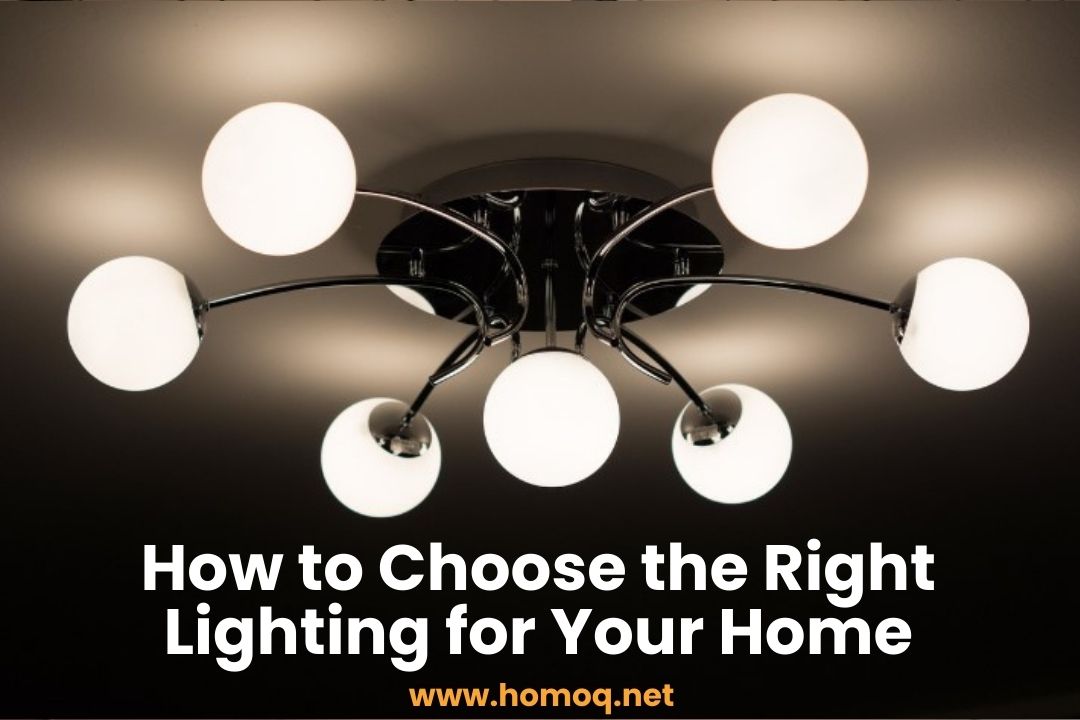Selecting the proper lighting for your home is essential to creating a functional and inviting space. Whether you are redesigning a single room or planning an entire home’s lighting scheme, understanding how to balance aesthetics, efficiency, and purpose is crucial. This guide will help you make informed choices to illuminate your home perfectly.
Why Lighting Matters
Lighting is not just about brightening a space—it significantly affects your home’s mood, functionality, and design. Proper lighting can:
- Enhance ambience: Set the tone for relaxation or energy.
- Improve functionality: Provide adequate light for specific tasks.
- Boost aesthetics: Highlight architectural features and décor.
Types of Lighting for Every Home
H2: Three Main Lighting Types
Understanding the three primary types of lighting is key to creating a well-lit home.
1. Ambient Lighting
Ambient lighting is the foundation of a room’s illumination. It provides overall brightness and ensures the space feels warm and welcoming.
- Examples: Ceiling-mounted fixtures, chandeliers, recessed lights.
- Best For: Living rooms, bedrooms, and kitchens.
2. Task Lighting
Task lighting is focused and designed for specific activities like reading, cooking, or working.
- Examples: Desk lamps, under-cabinet lights, pendant lighting.
- Best For: Home offices, kitchens, and bathrooms.
3. Accent Lighting
Accent lighting highlights architectural details, artwork, or decorative pieces. It adds drama and depth to a space.
- Examples: Wall sconces, track lights, LED strips.
- Best For: Living rooms, galleries, and outdoor spaces.
Tips for Choosing the Right Lighting
1. Evaluate Your Space
- Determine the size, shape, and function of each room.
- Consider the natural light sources available and how they change throughout the day.
2. Match the Lighting to the Room’s Purpose
- Living Room: Use layered lighting with ambient, task, and accent lights.
- Kitchen: Opt for bright task lighting over countertops and islands.
- Bedroom: Create a relaxing ambience with dimmable lights and bedside lamps.
3. Choose the Right Fixtures
Select lighting fixtures that complement your décor style.
- Modern homes: Sleek, minimalist fixtures.
- Traditional spaces: Chandeliers and decorative sconces.
- Industrial designs: Exposed bulbs and metal accents.
4. Focus on Colour Temperature. Colour temperature affects the mood of a room.
- Warm light (2700K-3000K): Cozy and inviting, ideal for living rooms and bedrooms.
- Cool light (3500K-5000K): Energizing, suitable for kitchens and offices.
5. Energy Efficiency
Choose energy-efficient options such as LED lights to reduce electricity costs and environmental impact.
Lighting Design Ideas for Every Room
Living Room
- Use dimmable overhead lights for versatility.
- Add floor lamps and table lamps for layered lighting.
Kitchen
- Brighten up work areas with under-cabinet task lighting.
- Use pendant lights over the island for a stylish touch.
Bedroom
- Install wall sconces for nighttime reading.
- Incorporate soft ambient lighting with dimmers.
Bathroom
- Use bright task lighting around the vanity.
- Add recessed lights for even illumination.
Outdoor Spaces
- Use pathway lights for safety.
- Add string lights or lanterns for ambience.
Common Lighting Mistakes to Avoid
- Ignoring layers: Relying on one type of lighting can make a room feel flat.
- Choosing the wrong bulb: Mismatched colour temperatures can disrupt the room’s mood.
- Poor fixture placement: Position lights strategically for balanced illumination.
FAQs
Q1: How can I make a small room appear larger with lighting?
A: Use recessed lighting or wall-mounted fixtures to save space. Combine with mirrors to reflect light and create the illusion of a bigger room.
Q2: What is the best lighting for a workspace?
A: Task lighting with a cool white bulb 4000 K- 5000 0K) enhances focus and reduces eye strain.
Q3: Can I mix warm and cool lighting in the same room?
A: Yes, but use them strategically. For example, use warm lighting for relaxation areas and cool lighting for task-oriented spaces.
Q4: How do I choose the right chandelier size?
A: Add the room’s length and width (in feet) to determine the chandelier’s diameter in inches. For example, a 12×12 room requires a 24-inch chandelier.
Q5: Are LED lights worth the investment?
A: Absolutely. LED lights are energy-efficient, long-lasting, and available in various styles and colours to suit any home design.
Conclusion
Choosing the proper lighting for your home is an art and a science. You can create a beautifully illuminated and functional home by understanding your space, layering different types of lighting, and selecting fixtures that match your style. Thoughtful lighting choices transform your house into a warm, inviting, and practical space you’ll love.

